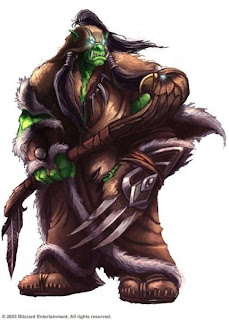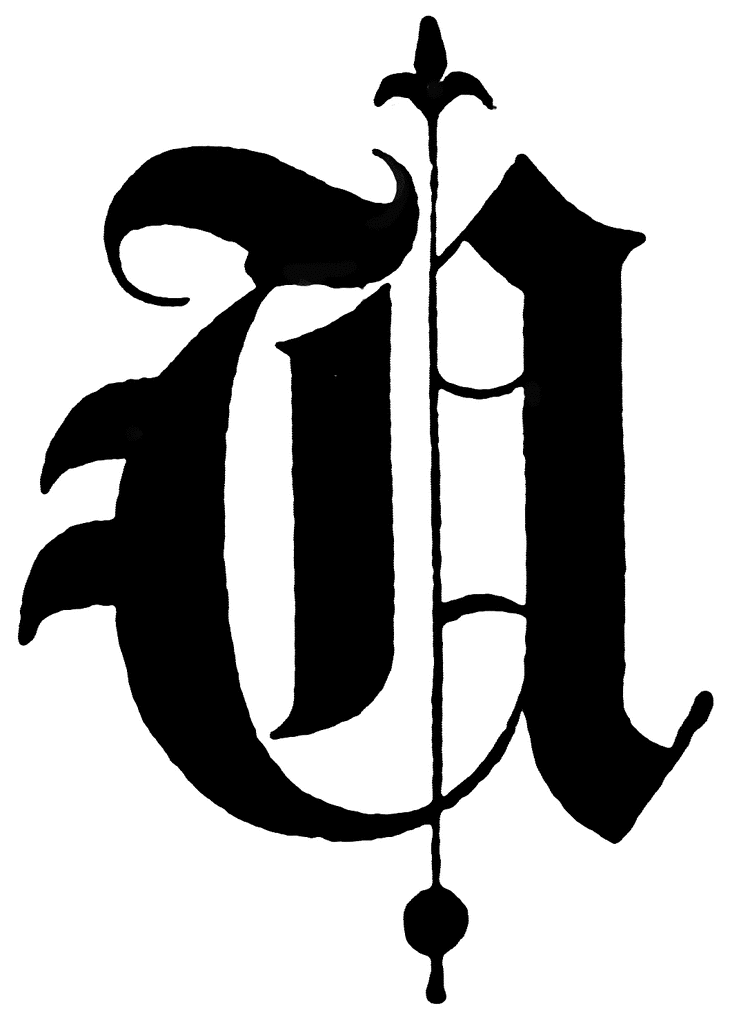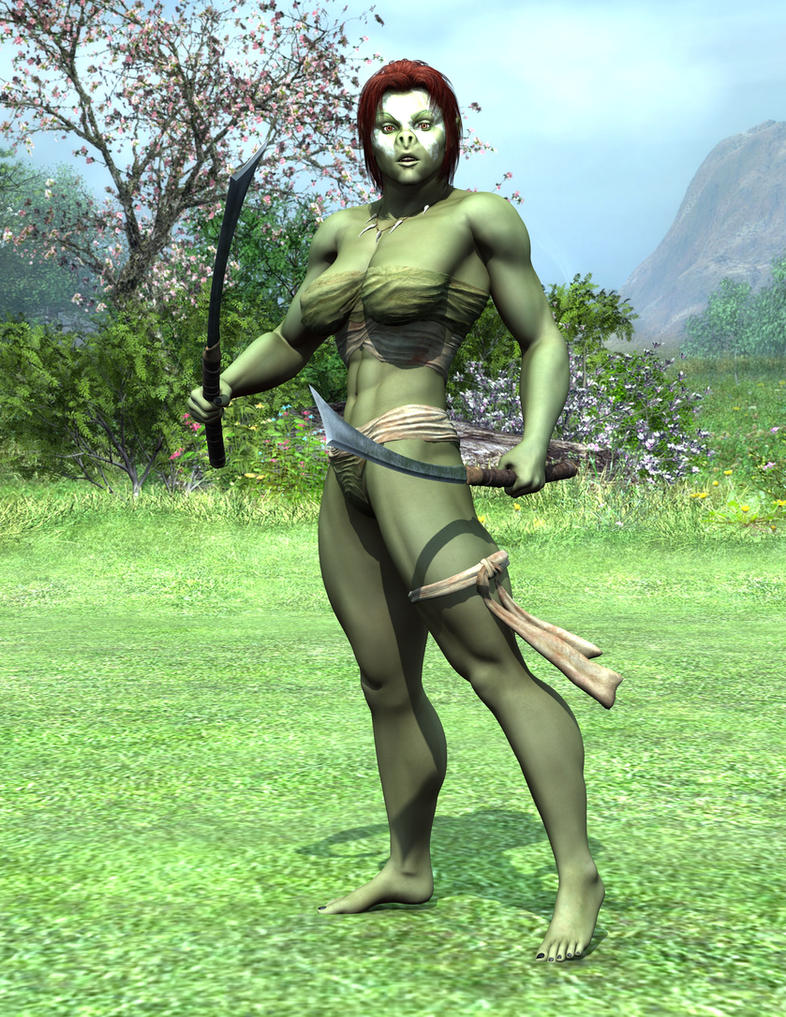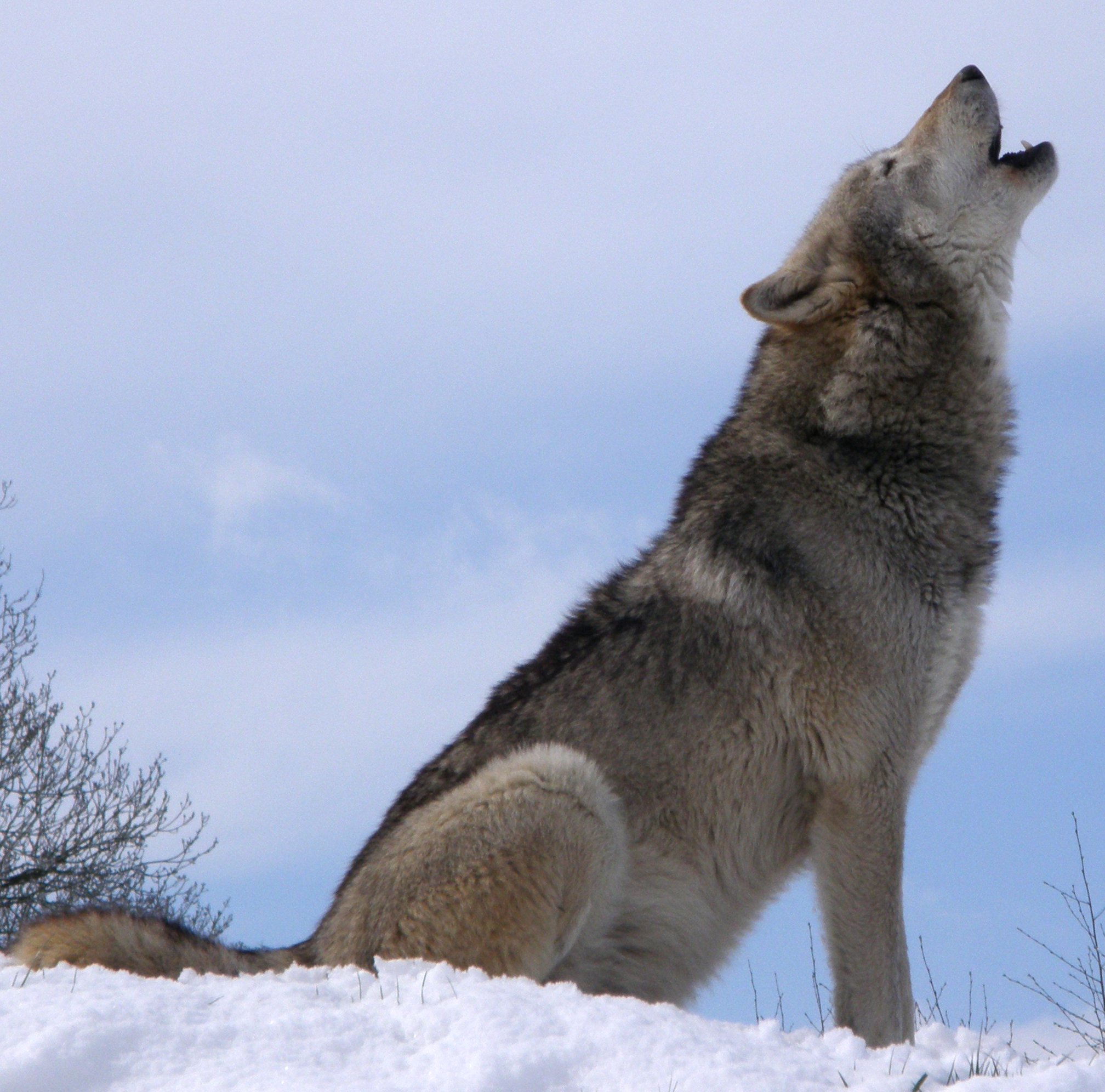The races of the population of Phoenicia are in many ways standard to the races found in the Pathfinder Core. However, there are a few aspects that are unique to each race that tailor them to the setting. Also, a few new races and a few "monsters" can also make acceptable PC races.
Pathfinder Gamemasters and Dungeons and Dragons DMs should decide which races they should allow in their version of Phoenicia. For your convenience, this post goes into more detail about the races in the player's primer. They are still divided into Major Races, Minor Races, and NPC races. The latter are races found in the City of Psionics that are not appropriate for play without consideration on the GM's or DM's part.
As always, information in the Pathfinder Core Rulebook as well as information in the various Dungeons and Dragons core rule books, should take precedent unless information here contradicts them. You should also consult the Player's Primer.
Major Races
The major races of Phoenicia are those found in the Pathfinder Core Rulebook, and the Dungeons and Dragons Player's Handbook. For the Phoenicia setting, they require some changes. In theory, you -- the GM -- should allow all of these races in your Phoenicia campaign.
DWARVES
The Dwarves come from another world, but were made up of six different tribes. The Pale Ones, the Gold Ones, the Iron Ones, the Wild Ones, the Dark Ones, and the Desert Ones. The Pale Ones migrated to the extreme North East, looking for a way to live their isolated, seal hunting ways. The Pale Ones eventually became the Snowdown Clan. The Wild Ones migrated into the extreme south of Vedan Lands and became known as the Jungle Dwarves. The Gold Ones migrated into the extreme southwest, going beyond the fabled land of Khem and beyond human exploration. This left the Desert Ones, the Dark Ones, and the Iron Ones.
The three of them maintained what little contact they had and formed a tri-clanship. The Desert Ones became the Wildstone Clan, the Iron ones became the Ironhammer Clan, and the Dark Ones became the Vulcan Clan. The Clans then split up. The Wildstone Clan found rich copper ore deposits to the east and settled in the southern hills and valleys of the Dragonwall Mountains. They would eventually teach Mankind how to make bronze swords with a stone mold.
The Ironhammer Clan moved into the North and West of the Dragonwall, finding rich iron deposits and eventually mastering the Riddle of Steel. The Ironhammer Clan became a white and delightsome people, though unfortunately they learned the recipe of beer brewing from the fabled Khemites. They eventually perfected the making of beer into a variety of ales, lagers, and beers (some with impressive heads). People often wonder if the Ironhammers are just either making steel or getting drunk. Those assumptions aren't true, of course. Only a small percentage of Ironhammer dwarves really touch any sort of alcoholic drink.
The Vulcan Clan moved to an active volcanic island and colonized the island. The Island, said to be the Forge of Hephaestus, became the home of the Vulcan Clan of Dwarves. Their skins, a dark gray, was as suited to the hot environment they tunneled into as everywhere else. The Vulcan Clan constructed a great fortress over the lava lake in the mouth of the volcano, and constructed a small city in the mountain itself. However, living on an active volcano is one thing; and living in one is quite another. Still, they mastered the art of forging ferroplasm, probably due to the high incidence of psionic talent among them.
Both of the Ironhammer Clan and the Wildstone clan uses the regular Dwarf creation rules found in the Patfinder Core Rulebook. Wildstone Dwarf PCs, however, may select the Desert Runner elf trait in lieu of one of the regular Dwarf traits.
The Vulcan clan of Dwarves use the Duergar character creation guidelines in Psionics Unleashed.
ELVES
The Elves of Phoenicia come from five tribes that crossed from their world. The five tribes include the Pelasgiri elves -- who were led by the Pelagsus dynasty; the Fair Elves, the Sea Elves, the Desert Elves, and the Drow. However, splitting of the tribes have happened numerous times. The Sea Elves settled and now live in the Great Sea, the nefarious Drow were mostly driven into caves, and the Desert Elves eke out an existence in the deserts and semi-arid areas of the land. Their history will be described later. As for the Pelasgiri and the Fair Elves ---
The Fair Elves and the Pelagsiri Elves lived beyond the Dragon Wall in what would become the domains of men. The Fair Elves created the kingdom of Arcadia and the Pelagsiri split into dozens of barbarian tribes that lived in the central lands.
Pelagsus taught his barbarian people the secrets of making a rough garment, hunting, and basic agriculture -- although they were barbarians. The Fair Elves, however, built a fledging civilization in Arcadia and started colonies throughout the World: Colonies such as Massalia, Syracuse, Tyr, Asconia, and Verdania. One such colony, Arcanus, traded with the Pelasgus elves of the Mountains above Arcadia.
However, the Pelagsiri became enamored with Fair Elf culture, and eventually became jealous when the Arcadians became petty and cruel in their eyes. In the Middle Bronze Age, the Pelagsiri launched an invasion into Arcadia -- Elf slaying Elf and enslaving elf.
Using the Power of Storm of Vengeance and Waves of Vengeance, entire Arcadian cities were totally destroyed by fire or by sea. Many Fair Elves were put to the sword or caught in chains. In five short years, many strong Fair Elven populations were slaughtered and what was left was scattered to the five winds or enslaved.
The Pelagsiri conquered all of Arcadia and the land of Arcadia had become known as the Grey Realm. Angered as to what happened, the Fair Elves in Massalia gathered together and it was agreed that invasion must be answered. Building ships of war, the Massalians launched a naval war that caused a rift between the two Elf tribes forever.
While some cities, such as Asconia and Verdania, were eventually retaken; many Massalian Fleets were sunk in the depths of the Sea by the forces of the Pelagsiri's command of Magic -- which they inherited from the destruction of Arcadia. The magnificent city of Tyr was eventually razed to the ground by Massalian elves after they couldn't retrieve specific texts from the Library of Magic. Eventually, however, the war was one of a stalemate -- the Massalian Elves had to stop fighting the Pelagsiri Elves in order to preserve their economy. And the Pelagsiri elves were left weakened.
However, without realizing it, the Massalian Elves got the last laugh as Man soon conquered and colonized Arcadia -- shrinking the Pelagsiri city holdings to just five cities. The remaining Pelagsiri elves in Arcadia renamed themselves the High Elves, and their lands the Grey Kingdom after their Grey Queen. And the Massalian Elves called themselves the Massalian Elves; although they hold that their nation is the only Fair Elf nation (which is untrue).
Eventually, slightly weakened, the Massalian nation was invaded by powerful feral trolls. Faced again with the destruction of their culture, the Massalian elves had made pacts with demons for the power to drive the trolls out. Once the pact was made, the Massalian Elves with their new found powers have pushed most of the trolls out of their borders. Currently, several Eastern and Northern forests are in dispute.
As Man expands and form colonies, however, the Elven Range seems to be weakening. Massalia is looking for new lands to start new colonies, so as to ensure that the Fair Elf race and culture can continue.
Both the Massalian Elves and the High Elves are created according to the Elf entry in the Pathfinder Core Rulebook. In Dungeons and Dragons, the two groups are considered Eladrin. However with some differences.
PCs belonging to both groups can choose to have blood feud with each other -- They may take Eternal Grudge, which is directed at one or the other. The differences between the two are cosmetic. Most Massalian Elves have eyes that glow brightly green or have emerald green eyes (others have brown, blue, or hazel eyes). The High Elves have eyes that are blue, brown, grey, orange, or red. The conflict between them is fifteen hundred years old, although both the Grey Queen and the Massalian Council are tired of the smouldering war. Both elves are fair, although the Mediterranean Climate of the Massalia has given some of the Massalians a slight uniform tan.
GNOMES
Gnomes are the rarest of the Major Races, and typically live on the islands of the Great Sea. The Gnomes are typically lovers of magic, music, and the sea. They partake of the bounty of the sea, and generally are seen as dwarf elves (although most elves would deny the connection). Some gnomish societies have dealings with the sea elves.
HALFLINGS
Halflings are so human looking that they are thought to be human crosses of either Ironhammer Dwarves or gnomes. However, this isn't true as Halflings are their own race. They frequently live among humans, but are seen as wanderers through most lands. The Halflings avoid the Hordelands; though. They don't find the term "Halfling" to be derogatory, but they do have a name for themselves in their own tongue which translates to "the People."
HUMANS
The humans are probably seen as children by the Dwarves and the Elves and other races. However, if they were to know the humans' actual history on the planet, the Dwarves and the Elves will realize that they are the "younger" races. The Human's range -- known as the World -- is slowly expanding. However, as the real original race of the planet; humans have colonized virtually everywhere. No changes are needed to the humans from both Pathfinder and the Player's Handbook.
The three of them maintained what little contact they had and formed a tri-clanship. The Desert Ones became the Wildstone Clan, the Iron ones became the Ironhammer Clan, and the Dark Ones became the Vulcan Clan. The Clans then split up. The Wildstone Clan found rich copper ore deposits to the east and settled in the southern hills and valleys of the Dragonwall Mountains. They would eventually teach Mankind how to make bronze swords with a stone mold.
The Ironhammer Clan moved into the North and West of the Dragonwall, finding rich iron deposits and eventually mastering the Riddle of Steel. The Ironhammer Clan became a white and delightsome people, though unfortunately they learned the recipe of beer brewing from the fabled Khemites. They eventually perfected the making of beer into a variety of ales, lagers, and beers (some with impressive heads). People often wonder if the Ironhammers are just either making steel or getting drunk. Those assumptions aren't true, of course. Only a small percentage of Ironhammer dwarves really touch any sort of alcoholic drink.
The Vulcan Clan moved to an active volcanic island and colonized the island. The Island, said to be the Forge of Hephaestus, became the home of the Vulcan Clan of Dwarves. Their skins, a dark gray, was as suited to the hot environment they tunneled into as everywhere else. The Vulcan Clan constructed a great fortress over the lava lake in the mouth of the volcano, and constructed a small city in the mountain itself. However, living on an active volcano is one thing; and living in one is quite another. Still, they mastered the art of forging ferroplasm, probably due to the high incidence of psionic talent among them.
Both of the Ironhammer Clan and the Wildstone clan uses the regular Dwarf creation rules found in the Patfinder Core Rulebook. Wildstone Dwarf PCs, however, may select the Desert Runner elf trait in lieu of one of the regular Dwarf traits.
The Vulcan clan of Dwarves use the Duergar character creation guidelines in Psionics Unleashed.
ELVES
The Elves of Phoenicia come from five tribes that crossed from their world. The five tribes include the Pelasgiri elves -- who were led by the Pelagsus dynasty; the Fair Elves, the Sea Elves, the Desert Elves, and the Drow. However, splitting of the tribes have happened numerous times. The Sea Elves settled and now live in the Great Sea, the nefarious Drow were mostly driven into caves, and the Desert Elves eke out an existence in the deserts and semi-arid areas of the land. Their history will be described later. As for the Pelasgiri and the Fair Elves ---
The Fair Elves and the Pelagsiri Elves lived beyond the Dragon Wall in what would become the domains of men. The Fair Elves created the kingdom of Arcadia and the Pelagsiri split into dozens of barbarian tribes that lived in the central lands.
Pelagsus taught his barbarian people the secrets of making a rough garment, hunting, and basic agriculture -- although they were barbarians. The Fair Elves, however, built a fledging civilization in Arcadia and started colonies throughout the World: Colonies such as Massalia, Syracuse, Tyr, Asconia, and Verdania. One such colony, Arcanus, traded with the Pelasgus elves of the Mountains above Arcadia.
However, the Pelagsiri became enamored with Fair Elf culture, and eventually became jealous when the Arcadians became petty and cruel in their eyes. In the Middle Bronze Age, the Pelagsiri launched an invasion into Arcadia -- Elf slaying Elf and enslaving elf.
Using the Power of Storm of Vengeance and Waves of Vengeance, entire Arcadian cities were totally destroyed by fire or by sea. Many Fair Elves were put to the sword or caught in chains. In five short years, many strong Fair Elven populations were slaughtered and what was left was scattered to the five winds or enslaved.
The Pelagsiri conquered all of Arcadia and the land of Arcadia had become known as the Grey Realm. Angered as to what happened, the Fair Elves in Massalia gathered together and it was agreed that invasion must be answered. Building ships of war, the Massalians launched a naval war that caused a rift between the two Elf tribes forever.
While some cities, such as Asconia and Verdania, were eventually retaken; many Massalian Fleets were sunk in the depths of the Sea by the forces of the Pelagsiri's command of Magic -- which they inherited from the destruction of Arcadia. The magnificent city of Tyr was eventually razed to the ground by Massalian elves after they couldn't retrieve specific texts from the Library of Magic. Eventually, however, the war was one of a stalemate -- the Massalian Elves had to stop fighting the Pelagsiri Elves in order to preserve their economy. And the Pelagsiri elves were left weakened.
However, without realizing it, the Massalian Elves got the last laugh as Man soon conquered and colonized Arcadia -- shrinking the Pelagsiri city holdings to just five cities. The remaining Pelagsiri elves in Arcadia renamed themselves the High Elves, and their lands the Grey Kingdom after their Grey Queen. And the Massalian Elves called themselves the Massalian Elves; although they hold that their nation is the only Fair Elf nation (which is untrue).
Eventually, slightly weakened, the Massalian nation was invaded by powerful feral trolls. Faced again with the destruction of their culture, the Massalian elves had made pacts with demons for the power to drive the trolls out. Once the pact was made, the Massalian Elves with their new found powers have pushed most of the trolls out of their borders. Currently, several Eastern and Northern forests are in dispute.
As Man expands and form colonies, however, the Elven Range seems to be weakening. Massalia is looking for new lands to start new colonies, so as to ensure that the Fair Elf race and culture can continue.
Both the Massalian Elves and the High Elves are created according to the Elf entry in the Pathfinder Core Rulebook. In Dungeons and Dragons, the two groups are considered Eladrin. However with some differences.
PCs belonging to both groups can choose to have blood feud with each other -- They may take Eternal Grudge, which is directed at one or the other. The differences between the two are cosmetic. Most Massalian Elves have eyes that glow brightly green or have emerald green eyes (others have brown, blue, or hazel eyes). The High Elves have eyes that are blue, brown, grey, orange, or red. The conflict between them is fifteen hundred years old, although both the Grey Queen and the Massalian Council are tired of the smouldering war. Both elves are fair, although the Mediterranean Climate of the Massalia has given some of the Massalians a slight uniform tan.
GNOMES
Gnomes are the rarest of the Major Races, and typically live on the islands of the Great Sea. The Gnomes are typically lovers of magic, music, and the sea. They partake of the bounty of the sea, and generally are seen as dwarf elves (although most elves would deny the connection). Some gnomish societies have dealings with the sea elves.
HALFLINGS
Halflings are so human looking that they are thought to be human crosses of either Ironhammer Dwarves or gnomes. However, this isn't true as Halflings are their own race. They frequently live among humans, but are seen as wanderers through most lands. The Halflings avoid the Hordelands; though. They don't find the term "Halfling" to be derogatory, but they do have a name for themselves in their own tongue which translates to "the People."
HUMANS
The humans are probably seen as children by the Dwarves and the Elves and other races. However, if they were to know the humans' actual history on the planet, the Dwarves and the Elves will realize that they are the "younger" races. The Human's range -- known as the World -- is slowly expanding. However, as the real original race of the planet; humans have colonized virtually everywhere. No changes are needed to the humans from both Pathfinder and the Player's Handbook.















